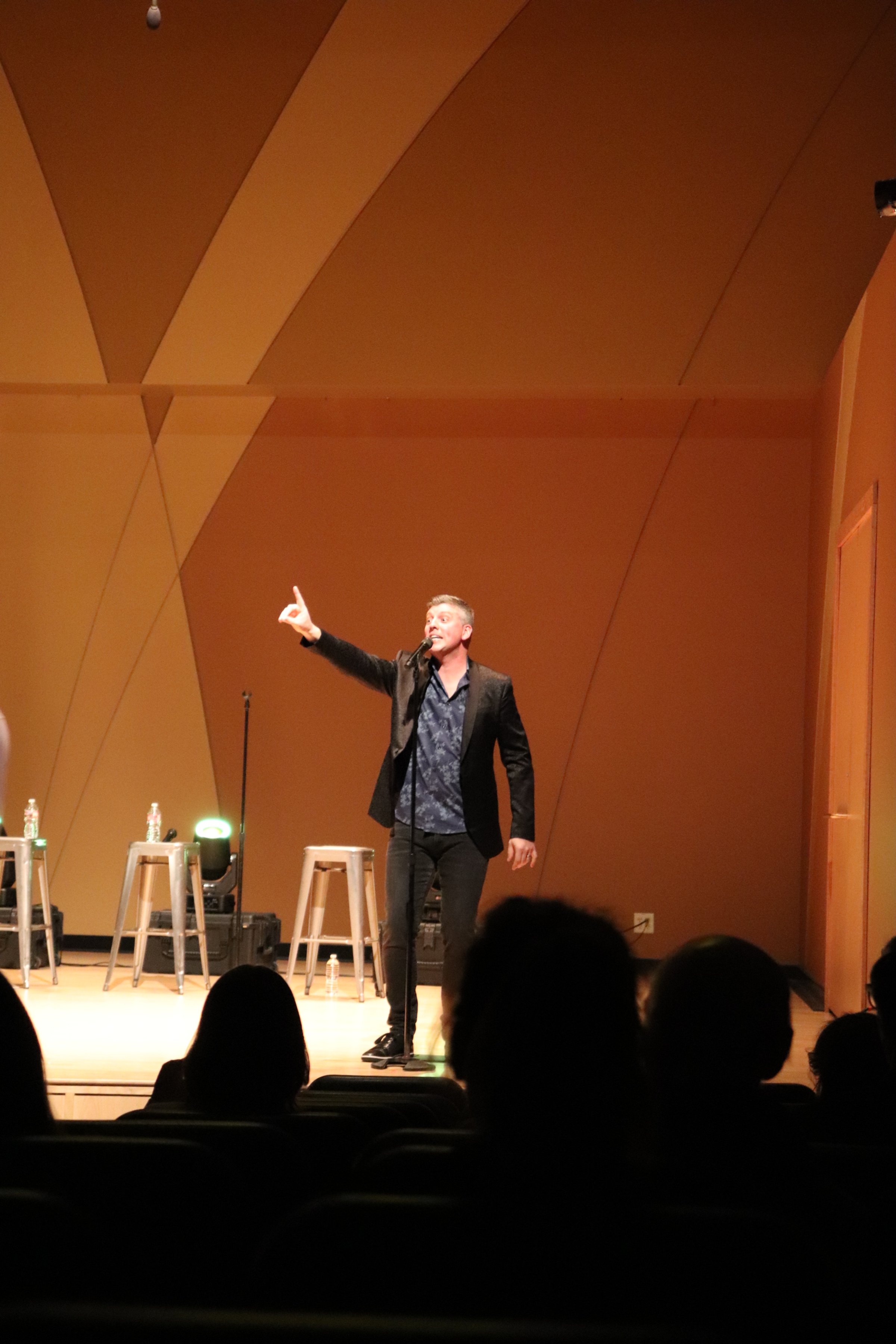On September 7th, 2022, I attended the first Regis University concert of this academic year, featuring Regis’ prized flutist, Ysmael Reyes. Held in Claver Recital Hall, the simple lighting, small but spacious venue, and scattered attendees made for an intimate concert experience. Dr. Reyes stepped on stage donned in a navy blue suit, and after cracking a few jokes and explaining the program, he readied himself and took a preparatory breath.
Dr. Reyes opened the night with Michael Gandolfi’s Three Pieces for Flute Solo, which dives straight into piercing notes and dissonant intervals. The first movement plays artfully with repetition and inversion, manipulating the basic phrase until it is barely recognizable; it ends with the phrase flipped horizontally— the opening note is the last note we hear. The second movement, my personal favorite, is aptly named “Note Juggler.” In this movement, Dr. Reyes juggled three parts, expertly articulating each ‘baton’ differently, not playing them as one melodic line, but rather giving each part a different character and color. I was enraptured immediately by Dr. Reyes’ talent for articulation and attention to detail. The last movement ends with a series of dramatic leaps and scalar motion towards a glorious and soaring high note.
Draped in an elegant emerald dress, Madoka Asari, a skilled pianist, joined Dr. Reyes on stage to perform the duets. Next in the program was Le rire de Sarai for Flute and Piano by Guillaume Connesson. Featuring a slow tempo and flowing rhythms, this minor key piece is haunting and beautiful, the motif a memorable and melancholic lullaby. The movement grows as the tempo and rhythms accelerate dramatically to the climax before abruptly simmering down, like a forgotten overflowing boiling pot that has been removed from the stove in a rush. Sorrowful slurs that resemble wailing whalesong follow, ensuring the piece ends a tragedy. The second movement starts with controlled chaos and a sense of urgency that propels the piece to the end.
Pièce op. 189 by Mélanie Bonis is delicate and beautiful— blooming notes and harmonies take the listener to springtime. Listening to it reminds me of a Thomas Kinkade painting: idealistic and magical. The tension is interwoven subtly; it is an overwhelmingly airy and peaceful piece. Although no part was particularly memorable, I enjoyed the sweet swells and graceful composition.
Sonata op. 94 for Flute and Piano’s first movement oscillated between peaceful and lively at the drop of a pin, taking the audience on a journey with twists and turns. The motif of this movement was my favorite melody of the whole evening; the flute was euphonious and triumphant. Notably of a faster tempo, the second movement begins at a gallop before slowing down to a canter, sprinkled with sporadic bursts of energy that build in intensity to the end. I found the call and response (imitation) between the flute and piano particularly charming in the third movement, “Andante.” The fourth movement is bright and spritely, full of quick rhythms played at forte. Midway through, the movement mellows out, and the piano daringly explores the lower registers, closely followed by the flute. The piece and concert end with an anthemic BUM BUM BUMMMMMM.
This concert sets an imposing standard for the rest of the concerts for this season; Dr. Reyes and Ms. Asari played every piece with such vitality and with such precision that I couldn’t help but think that the performance was a mirror image of the composers’ imagination. Every note was played intentionally and shimmered fully in the air before giving way to the next note. In Dr. Reyes’ excellent manner of playing, there were no passing tones— every note was cherished and artfully stroked onto the canvas of time. The chemistry between the performers was not only eye-catching but added another element of gossamery cohesion throughout the concert. Dr. Reyes and Ms. Asari moved with each other and the music, almost as if they were sharing a boat on a river, enjoying the journey and all of its ebbs and flows. No aspect ever felt forced—not the articulation, the dynamics, the rhythms, or the challenging pitches—it never felt like a performance, nor was I ever conscious of the gap between performer and audience— we were all there experiencing the beauty of the pieces together.
I enjoyed the concert tremendously. For me, artistic connection is the most important skill for a musician, and Ysmael Reyes and Madoka Asari played freely and without reservations. Instrumental music can often seem far removed from many of our pedestrian lives today— pieces tend to be long, seemingly indecipherable and distant from our fast-paced and commercial reality. However, I believe concerts such as Dr. Reyes’ flute showcase can highlight the depths of expression and connection that this type of music has to offer.






